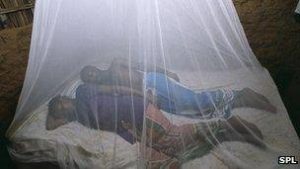Malaria is a serious and sometimes fatal mosquito-borne infectious disease caused by bites from Plasmodium-infected female Anopheles mosquitoes.
Five known parasite species cause malaria in humans( Plasmodium falciparum, P. vivax, P. ovale, P. malariae and P. knowlesi). Two of these species (P. falciparum and P. vivax) pose the greatest threat to humans and over the years, P. falciparum has accounted for a large percentage of estimated malaria cases in the world.
Epidemiology:
Malaria is presently endemic but prevalent in tropical and subtropical regions because of high rainfall, consistent high temperatures and high humidity, along with stagnant waters where mosquito larvae readily mature, providing them with the environment they need for continuous breeding.
According to the latest World malaria report, Africa continues to carry a very high share of the global malaria burden.

Population At Risk:
The World Health Organization estimates half of the world’s population to be at risk of being burdened with malaria. Those with a higher risk of contracting malaria and developing severe disease include infants, children under 5 years of age, pregnant women, patients with HIV/AIDS, non-immune migrants, and travellers.
Transmission:
Usually, people get malaria by being bitten by an infective female Anopheles mosquito. The intensity of transmission depends on factors related to the parasite, the vector, the human host, and the environment.
Only female Anopheles mosquitoes can transmit malaria and they must have been infected through a previous blood meal taken from an infected person.
Other routes of malaria transmission are possible because the malaria parasite is found in the red blood cells of an infected person, hence malaria can also be transmitted through blood transfusion, organ transplant, or even from a mother to her unborn infant before or during delivery.

Symptoms:
The first symptoms of malaria may appear about (10-15) days after infection. They include fever, headache, and chills. These symptoms may be mild and difficult to recognize as malaria. If not treated, malaria can progress to severe illness, and sometimes lead to death.
With severe malaria, one can develop one or more of the following complications: severe anaemia, respiratory distress, metabolic acidosis, cerebral malaria in children, and multi-organ failure is also not uncommon in adults.
In malaria-endemic areas, people may develop partial immunity allowing asymptomatic infections to occur.
Diagnosis:
Early diagnosis and treatment of malaria reduces disease, spread, and prevents death.
Malaria can be diagnosed in the laboratory via microscopy of a thin or thick blood film. The thin blood film identifies the specific type of plasmodium causing the disease while the thick blood film quantifies the number of parasites present in the red blood cells.
Rapid diagnostic tests for malarial antigen can be used on a supplementary basis when the diagnosis is performed by inexperienced staff.
Malaria can be treated with antimalarial drugs. The commonly used is the artemisinin-based combination therapy (ACT).

Malaria Prevention:
Vector control is an essential component of malaria prevention. It has been proven to successfully reduce or interrupt malaria transmission when coverage is sufficiently high.
The two core measures for malaria vector control are:
• Use of Insecticide-treated nets (ITNs)
• Indoor residual spraying of insecticides (IRS)
Other methods of malaria prevention include:
• Interventions targeting larval stages like draining and filling pools or through the use of larvacides.
• Oils may be applied to the water surface, to suffocate the larvae and pupae.
• Draining swamps and ditching marshy areas to remove standing water.
• Use of mosquito repellents especially for travellers to endemic regions.

These measures have helped achieve the interruption of local transmission of malaria parasites in defined geographical areas. Continuous preventive measures can also lead to the prevention of re-establishment of transmission. Interventions will no longer be required once eradication has been achieved. Together we can achieve a malaria-free society. Malaria can be prevented and treated.



